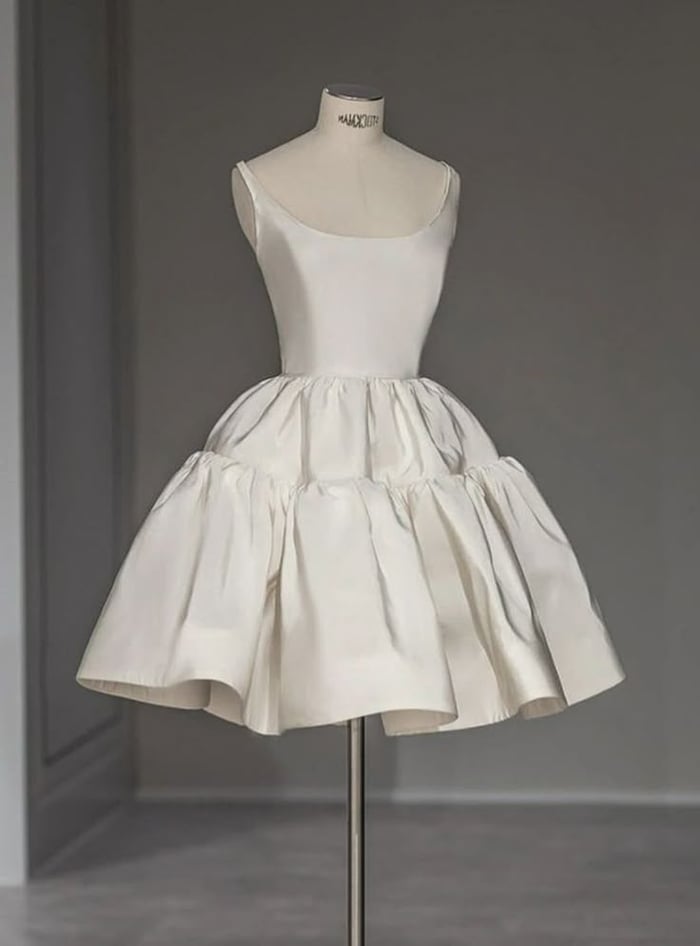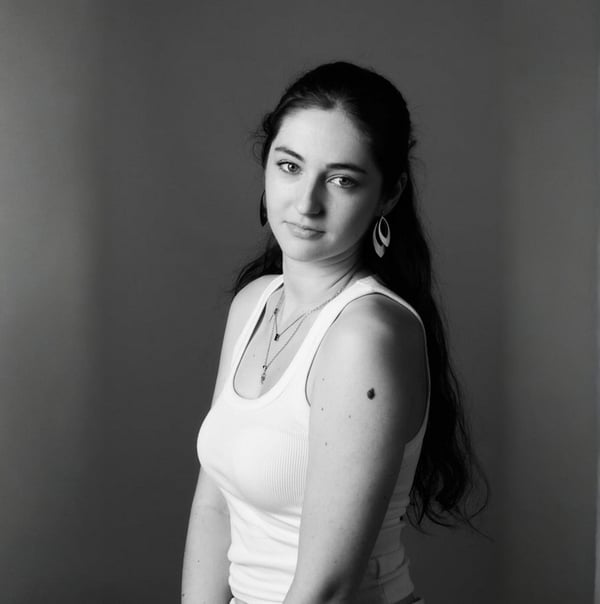Expert Mannequin Modeling Techniques for Perfect Shots
Table of Contents
- Why Mannequin Photography Still Matters
- Preparing Your Mannequin and Garment
- Lighting and Camera Settings for Flawless Results
- Composition and Posing Techniques
- Post-Processing and Retouching
- How Modelia Enhances Your Mannequin Photos
- Mannequin Modeling Techniques for Different Garment Types
- Common Mistakes to Avoid
- FAQ
- Final Thoughts
In the world of fashion and e-commerce photography, mannequins play a crucial role. They offer a consistent, cost-effective way to showcase garments without needing a live model for every shoot. However, simply dressing a mannequin and snapping a photo isn’t enough. To achieve high-quality results that attract customers and represent your brand accurately, you need to apply the right mannequin modeling techniques.
Mastering mannequin photography involves more than just lighting and lenses. From preparation to post-production, every step matters. This guide explores the most effective practices for capturing compelling mannequin shots, plus how powerful tools like Modelia can help you produce clean, dynamic images with minimal effort and an easy method.
Whether you're a fashion brand, boutique owner or freelance photographer, these techniques will elevate the look of your catalog and online store, giving your garments the attention they deserve.

Why Mannequin Photography Still Matters
Even with the rise of 3D modeling and influencer marketing, mannequin photography remains a staple in product visuals. It allows for consistent styling, poses, and lighting, making it ideal for scalable catalog creation.
Flat lays can sometimes lack depth, and ghost mannequins or 3D renderings may not always capture the texture or fit of a garment properly.
The key to success lies in applying mannequin modeling techniques that mimic natural body posture and highlight each item’s unique characteristics. When done right, these photos can offer shoppers a clear, flattering view of the product's design and fabric, helping them feel more confident in their purchase.
Preparing Your Mannequin and Garment
Before the camera even turns on, preparation is critical. First, make sure your mannequin is clean, hasn't dust and it is stable. Scratches or dirt might not seem like a big deal, but they show up really clearly in high-resolution images.
Next, carefully steam or iron each garment to remove wrinkles. Even minor creases can affect the perceived quality of your product. Fit the clothing carrefully on the mannequin, using pins or clips on the back to create a tailored, form-fitting silhouette. This technique ensures the garment follows the body’s natural shape, avoiding sagging or bunching that may distort its look.
If you're using a headless or invisible mannequin, make sure to align it properly to maintain balance and symmetry. Consistency across your product shots helps your brand appear professional and trustworthy.

Lighting and Camera Settings for Flawless Results
Lighting is one of the most important elements of mannequin photography. Use soft, diffused lighting, ideally from both sides, to reduce shadows and highlight the texture of the fabric. Natural light can work, but controlled studio lighting ensures consistency across sessions.
Avoid using harsh directional light, which can create unflattering contrasts and misrepresent color. A basic three-light setup with a key light, fill light, and backlight can offer clean, even illumination that enhances the shape and structure of the garment.
When it comes to camera settings, use a tripod to ensure perfect alignment and stability. Choose a high-resolution camera with a prime lens around 50mm to 85mm. This range avoids distortion while allowing you to capture rich, detailed shots. Shoot in RAW format to preserve image quality for editing.

Composition and Posing Techniques
While mannequins don’t move, their positioning still communicates a lot. Make sure the pose feels balanced and lifelike. Shoulders should be even, arms symmetrical, and legs proportionate. Some brands prefer a natural stance, while others go for a slightly stylized pose to create visual interest.
Use consistent framing, typically centered and waist-up or full-length, depending on the garment. Leave enough negative space around the edges so the product isn’t cramped. Keep the background clean and neutral unless the setting is part of the brand identity.
To bring your mannequin to life visually, angle it slightly to give depth and avoid a completely flat, front-facing image. Even a subtle twist in the torso or leg can add dimension and realism.
Post-Processing and Retouching
Even with the best mannequin modeling techniques, post-production is essential. Start by cropping and aligning your images for consistency. Adjust exposure and contrast to bring out fabric details, and fine-tune white balance to ensure accurate color.
Use retouching tools to remove any visible pins, clips, or background distractions. If you’re aiming for ghost mannequin effects, you’ll need to photograph and edit multiple frames (front, back, neck, sleeves) and blend them together to create a “hollow” look that keeps the garment in shape but removes the mannequin itself.
This can be time-consuming, especially at scale. That’s where automation tools like Modelia come in handy.

How Modelia Enhances Your Mannequin Photos
Modelia is a powerful AI platform that helps fashion brands generate high-quality visuals, including mannequin-style presentations, with minimal manual effort. Whether you're working with basic product photos or flat lays, Modelia transforms them into polished, studio-quality images.
For mannequin photography, Modelia allows you to upload your garment photo and apply enhancements such as:
Background cleanup and neutralization
Lighting correction for even exposure
Sharpness and texture enhancement
Ghost mannequin simulation
Automated cropping and alignment
One of Modelia’s standout features is the ability to turn a single image into multiple styled versions, making it perfect for marketing campaigns, e-commerce product galleries, and social content. This reduces the need for repeat photoshoots and lets brands scale their visual output with consistency and efficiency.
With this tool you can transform a mannequin into a real life model in seconds, it is as easy as uploading your mannequin image and update the model settings as you want, one click later you will see your mannequin transformed in a high quality model.

In a space where first impressions matter, Modelia helps you create flawless visuals that stay true to the garment while saving you time and production costs.
Mannequin Modeling Techniques for Different Garment Types
Different clothing pieces require different handling. A few examples:
Tops & Shirts: Emphasize shoulder and sleeve structure. Use padding or clips for a fitted silhouette.
Dresses: Create gentle movement at the hemline with a fan or manual lift during shooting.
Pants & Trousers: Pin excess fabric at the waist and ankle to ensure a clean, straight fall.
Outerwear: Make the coat or jacket look slightly open to reveal inner lining or styling layers.
Each garment tells its own story, your job is to present it in the most appealing way possible.
The best mannequin modeling techniques are those that make the clothing feel alive, even without a model wearing it.
Common Mistakes to Avoid
Even experienced photographers can overlook small details. Here are some pitfalls to avoid:
Overlooking wrinkles or poor garment fit
Using uneven lighting that distorts color
Forgetting to align the mannequin with the camera
Ignoring post-editing cleanup (visible pins, background noise)
Shooting with inconsistent framing across your catalog
Staying detail-oriented and using tools like Modelia can help you maintain a high level of quality, even with high-volume shoots.
FAQ
What Are Techniques in Modeling?
In the context of fashion and commercial photography, modeling techniques refer to the methods and skills models use to present clothing, accessories, or products effectively in front of a camera or on a runway. These techniques include mastering posture, understanding lighting and angles, using facial expressions to convey mood or brand identity, and adapting to different types of garments. Good modeling also involves the ability to take direction well and communicate non-verbally through body language. In product styling, such as with mannequins, “modeling techniques” extend to how the clothing is arranged, pinned, and lit to replicate how it would look on a real person.
What Are Models of Object Modeling Techniques?
Object modeling techniques are primarily used in fields like computer science, software engineering, and 3D design. These refer to structured methods for representing real-world objects in digital form. Examples include Unified Modeling Language (UML), Entity-Relationship Models (ERM), and Object-Oriented Modeling (OOM). In visual design or photography, these techniques can be applied in virtual styling, where digital tools replicate garments, layouts, or mannequins to simulate real-world visuals. Platforms like Modelia leverage these concepts to generate high-quality fashion imagery by simulating depth, texture, and layout using intelligent modeling systems.
Is Mannequin a Model?
Yes, a mannequin is a type of model, specifically a static, physical representation of the human body used to display clothing and accessories. While it doesn’t walk the runway or pose dynamically, a mannequin fulfills the same function as a human model: showcasing how garments fit, fall, and look in real life. In retail stores and photography studios, mannequins help provide consistency and focus in visual presentation, making them an essential tool in the fashion and merchandising industries.
Did Mannequins Used to Be Real People?
Historically, mannequins were not actual people, but the idea of using human-like forms for display dates back centuries. In early fashion history, tailors would sometimes use wooden or wire figures shaped to resemble clients. However, there’s a myth or misconception, often circulated in folklore and pop culture, that early mannequins were modeled after real people or even used real human remains. In reality, mannequins have always been man-made structures, though advances in materials and design have made them increasingly lifelike. Today, digital tools like Modelia are even pushing the boundaries further, replacing physical mannequins with virtual ones that are fully customizable.
Final Thoughts
Mannequin photography is a staple for fashion brands and product marketers. But to make the most of this approach, you need more than just a mannequin and a camera. You need intention, precision, and a few expert mannequin modeling techniques to bring your visuals to life.
From styling and lighting to editing and automation, every step plays a role in creating clean, professional content. With platforms like Modelia, much of the heavy lifting is streamlined—giving you more time to focus on creativity, brand storytelling, and scaling your content without sacrificing quality.
The next time you plan a mannequin shoot, approach it like an art form. Because in the eyes of your customers, your photos are your product’s first impression, and great technique makes all the difference.
How would you rate this article:
Related Articles
- Step-by-Step Guide to Changing Dress Colors Online with AI
- How to Start an Ecommerce Store: Essential Tips for Success
- Shopify Conversion Rate Optimization Guide
- AI Agent for Fashion: Smarter Business & Design Tools
- How to Care for Your Clothes to Make Them Last Longer
- Top AI Fashion Companies Innovating the Future of Fashion with Artificial Intelligence
- AI Clone Garment for Fashion Firms
- Best Virtual Fitting Room Apps: Top Picks for Online Shopping
- AI Fashion trends forecasting for 2025
- AR Magic Mirror: How Augmented Reality is Transforming Fashion Retail and Shopping Experiences

